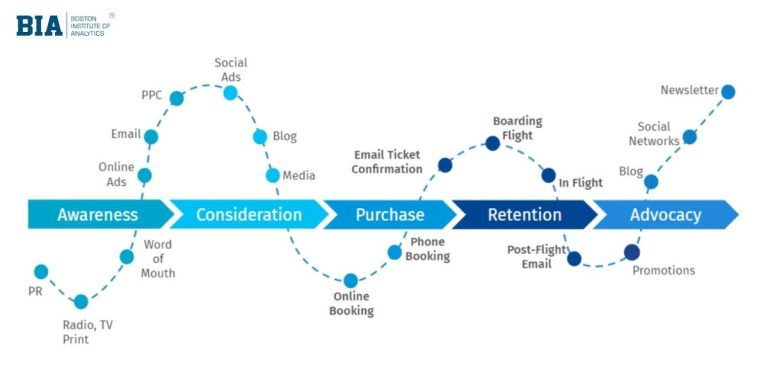4 Effective Strategies to Increase Productivity in the Workplace

Increasing workplace productivity is about creating an environment where employees can work efficiently, stay motivated, and achieve their best results without unnecessary stress. Companies utilizing workforce intelligence software have reduced their data acquisition time by 50% while significantly improving decision-making accuracy.
When teams have clear goals, manageable workloads, and the flexibility to work in ways that suit them, performance naturally improves. A positive work culture, supported by recognition and growth opportunities, also plays a key role in keeping employees engaged.
By identifying and removing productivity roadblocks, businesses can empower their teams to achieve more in less time, ultimately driving both individual satisfaction and organizational success.
Strategy 1: Design a Neuroscience-Optimized Work Environment
Once you’ve identified your peak energy windows, the next critical factor is ensuring your physical environment supports rather than sabotages these high-performance periods. Your workspace design significantly impacts cognitive function.
Cognitive Load Reduction Techniques
Visual clutter overwhelms your brain’s processing capacity. Clear surfaces allow for clearer thinking. Research shows that organized spaces improve decision-making speed by reducing background mental noise.
Color psychology matters more than most people realize. Blues and greens promote calm focus, while reds can increase urgency but also stress levels.
Create Focused Work Zones
Open offices present unique challenges, but strategic solutions exist. Noise-canceling headphones, privacy screens, or even workplace productivity strategies like designated quiet hours can create islands of focus within busy environments.
When it comes to team celebrations, group greeting cards are often shared for milestone achievements, fostering positive connections while maintaining professional boundaries in shared spaces.
Implement Biophilic Design Elements
Plants aren’t just decoration, they’re productivity tools. Studies consistently show that natural elements reduce stress hormones while improving air quality and mental clarity.
Temperature control directly affects cognitive performance. Most brains work best between 70-72°F, though individual preferences vary slightly. While an optimized environment sets the stage for productivity, smart technology integration can multiply your efforts exponentially.
Strategy 2: Master Your Biological Prime Time for Peak Performance
Understanding your natural energy rhythms can revolutionize how you increase productivity throughout your workday. Most people experience predictable peaks and valleys that directly impact their output quality.
Discover Your Natural Energy Rhythms
Your chronotype determines when you’re naturally alert versus sluggish. Some folks hit their stride at 6 AM, while others don’t fully wake up until noon. Track your energy levels for a week, noting when you feel sharp versus when you’re dragging.
Pay attention to those moments when complex tasks feel effortless. That’s your biological prime time calling.
Align High-Impact Tasks with Energy Peaks
Schedule your most demanding work during peak energy windows. Save routine tasks like email sorting for low-energy periods. This simple switch can dramatically improve both speed and quality.
Strategic task scheduling isn’t just about time, it’s about energy management. You wouldn’t run a marathon when you’re exhausted, so don’t tackle important projects during your natural down times.
Combat Energy Depletion with Smart Recovery
Micro-breaks between tasks prevent mental fatigue from building up. Even two-minute breathing exercises or quick walks can reset your focus. Smart recovery isn’t lazy, it’s strategic fuel for sustained performance.
With 67% of professionals reporting energy crashes that derail their productivity by mid-afternoon, the foundation of any effective workplace strategy begins with understanding your body’s natural rhythms.
Strategy 3: Leverage AI and Automation for Productivity Improvement Techniques
By leveraging AI and automation, you can eliminate the mundane tasks that drain your precious peak-performance hours. Modern productivity improvement techniques focus on intelligent systems rather than manual effort.
Intelligent Task Prioritization Systems
AI-powered project management tools analyze your work patterns and suggest optimal task sequences. They’re not replacing human judgment—they’re amplifying it with data-driven insights.
Smart notification management prevents constant interruptions. Configure systems to batch similar notifications rather than creating continuous distractions.
Automate Repetitive Workflows
Process automation identification starts with tracking your daily routines. Which tasks do you repeat without much thought? Those are prime automation candidates that can free up mental bandwidth for creative work.
Low-code solutions make automation accessible to non-technical users. You don’t need programming skills to streamline routine processes.
Data-Driven Productivity Measurement
Key performance indicators help you understand what’s moving the needle versus busy work. A study at Stanford in 2014 proved that people who put in 70 hours of work were less productive than those who put in less than 60 hours of work. This validates why measurement matters more than hours logged.
Technology solutions provide the foundation, but research shows that 85% of workplace inefficiencies stem from communication breakdowns and collaboration friction.
Strategy 4: Optimize Communication and Collaboration Dynamics
The next frontier lies in transforming how your team connects, shares information, and builds trust. Effective productivity tips always address the human element alongside technological solutions.
Implement Asynchronous Communication Frameworks
Deep work protection requires boundaries around constant communication. Designated focus hours prevent meetings from fragmenting your most productive periods.
Documentation-first protocols ensure important information doesn’t get lost in chat streams or forgotten conversations.
Foster Psychological Safety for Enhanced Team Performance
Trust-building exercises create environments where people share ideas freely. When team members aren’t worried about judgment, they contribute more innovative solutions.
Error reporting without blame encourages continuous improvement rather than cover-up behaviors that waste time and resources.
Strong team dynamics create the perfect conditions for deep, focused work—but only if you have the personal systems to capitalize on these opportunities.
Measuring Success: Productivity Metrics That Matter
Building adaptable frameworks is essential, but without proper measurement, you’ll never know which strategies enhance workplace efficiency. Smart metrics focus on outcomes rather than activities.
Individual productivity assessment should track both quantity and quality outputs. Time spent doesn’t equal value created. Focus on results that align with broader organizational goals rather than just completion rates.
Team performance evaluation requires balancing individual contributions with collaborative achievements. The best metrics encourage both personal excellence and collective success.
Now that you understand what to measure, the question becomes how to systematically implement these strategies without overwhelming yourself or your team.
Implementation Roadmap: Your 90-Day Productivity Transformation
This proven approach guides your step-by-step transformation. Week 1-30 focuses on foundation building through energy mapping and environment optimization. Habits take time to stick, so start with one or two changes rather than attempting everything simultaneously.
Week 31-60 involves system optimization and technology integration. By this point, your basic routines should feel natural, making it easier to add automation and measurement tools.
Week 61-90 emphasizes advanced technique integration and fine-tuning. This final phase ensures long-term sustainability rather than short-term productivity spikes that quickly fade.
Final Thoughts on Workplace Productivity Excellence
These eight strategies work together as an integrated system for sustained performance improvement. The key isn’t perfection, it’s consistent application of proven principles that align with human nature rather than fighting against it. Your biological rhythms, environmental design, and team dynamics all contribute to creating conditions where productivity happens naturally. Start with your biological prime time, then build outward from there.
Common Questions About Workplace Productivity
Which strategy can increase productivity?
Regular breaks, physical activity, and flexible work arrangements help employees feel supported. Time to recharge prevents burnout, leading to consistent performance, increased motivation, and more engaged employees throughout the workday.
What are the strategies for increasing production?
Analyze current workflows, modernize processes and technologies, maintain equipment properly, develop targeted employee training, keep workspaces organized, and balance inventory levels to streamline operations effectively.
How long does it take to see productivity improvements?
Most people notice initial changes within 2-3 weeks of implementing biological prime time scheduling, while comprehensive workplace transformations typically show measurable results within 90 days of consistent application.






